Abstract
A study was made of the persistence of different Salmonella serotypes in hens' egg albumin in vitro at 4, 20 and 30 degrees C. The majority of serotypes remained viable but did not increase in numbers at 20 and 30 degrees C for 42 days. At 4 degrees C many of the serotypes died out. The addition of ferric ammonium citrate on the 42nd day of incubation induced multiplication of organisms incubated at 20 and 30 degrees C, but not at 4 degrees C. The pH and glucose concentration of the albumen diminished only when heavy growth occurred. Salmonella enteritidis remained viable on the air cell membrane in vitro for 17 days at 4, 20 and 30 degrees C. Thirty percent of the organisms also remained motile in albumen for 42 days at 25 degrees C and up to 5% of the cells remained motile for up to 20 days at 4 degrees C.
Full text
PDF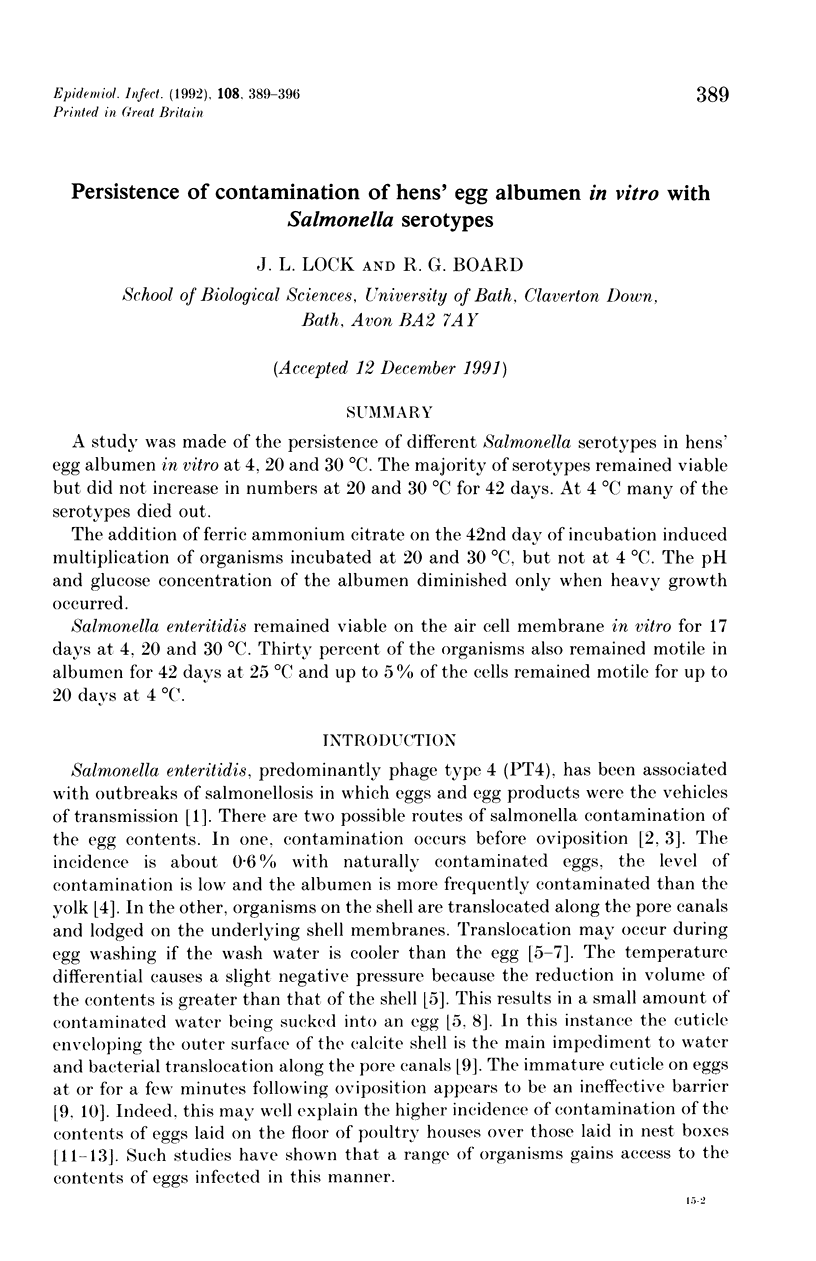
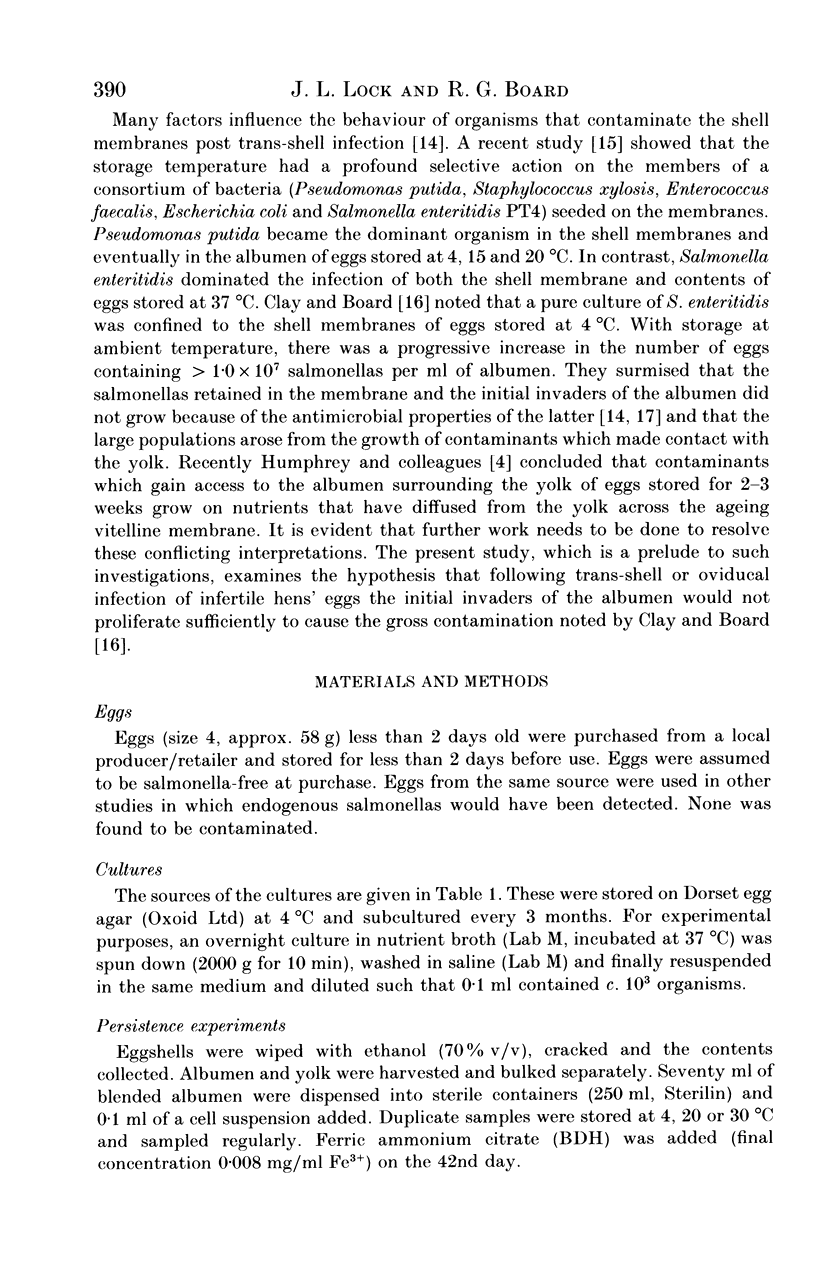
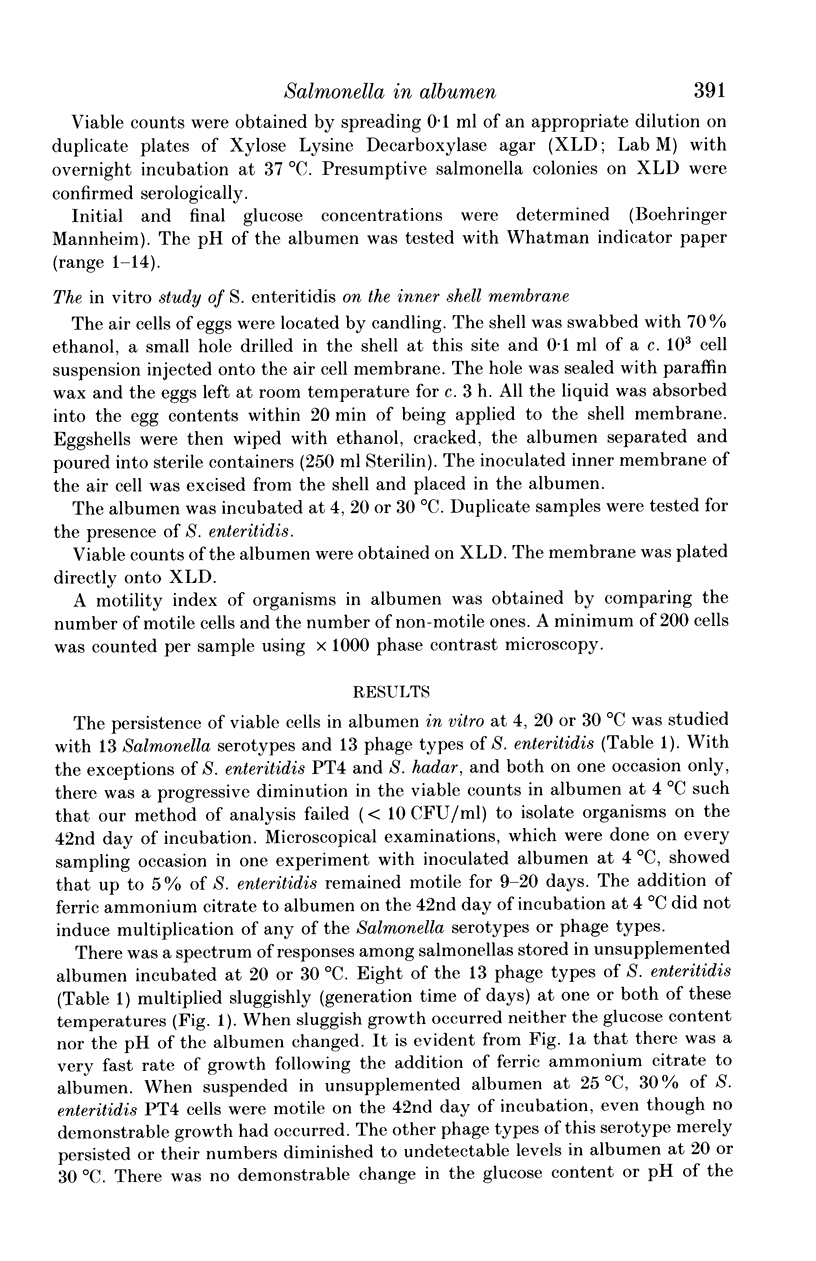
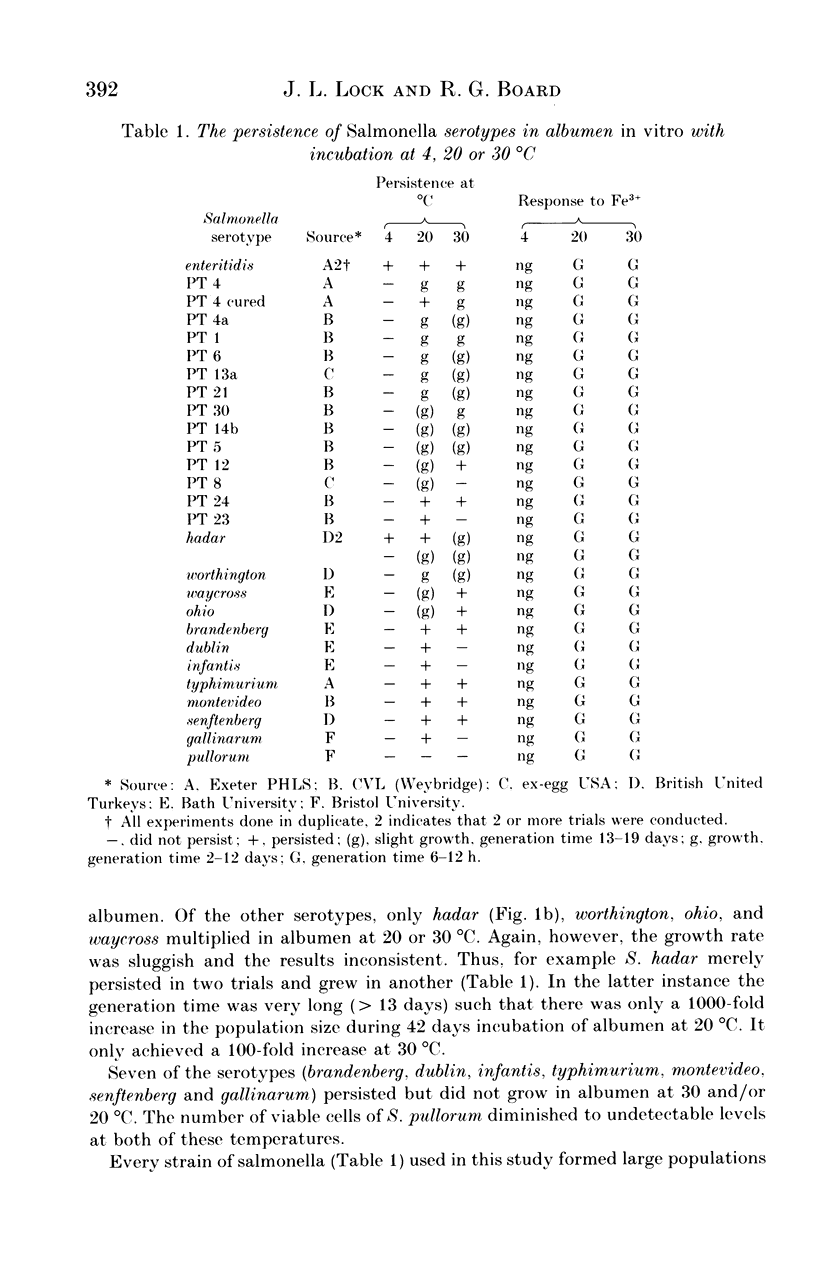

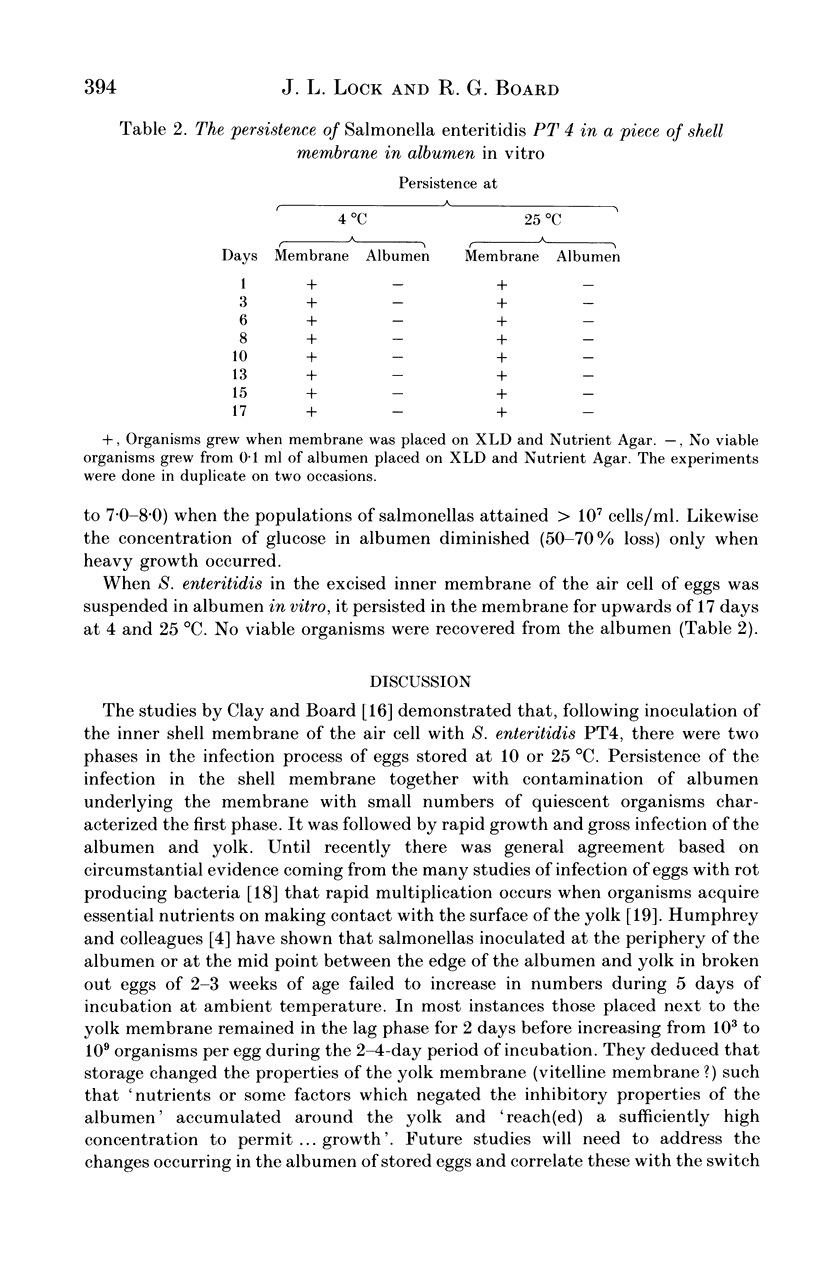
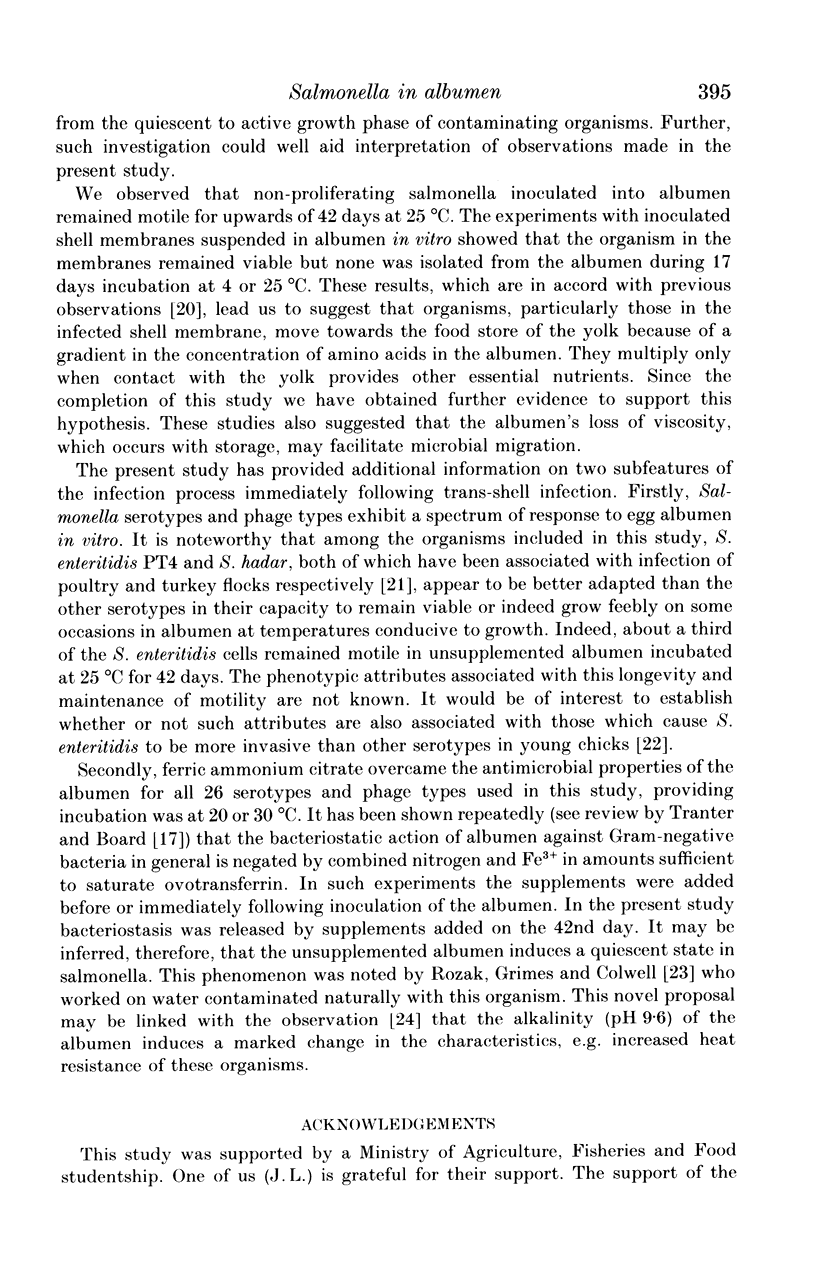
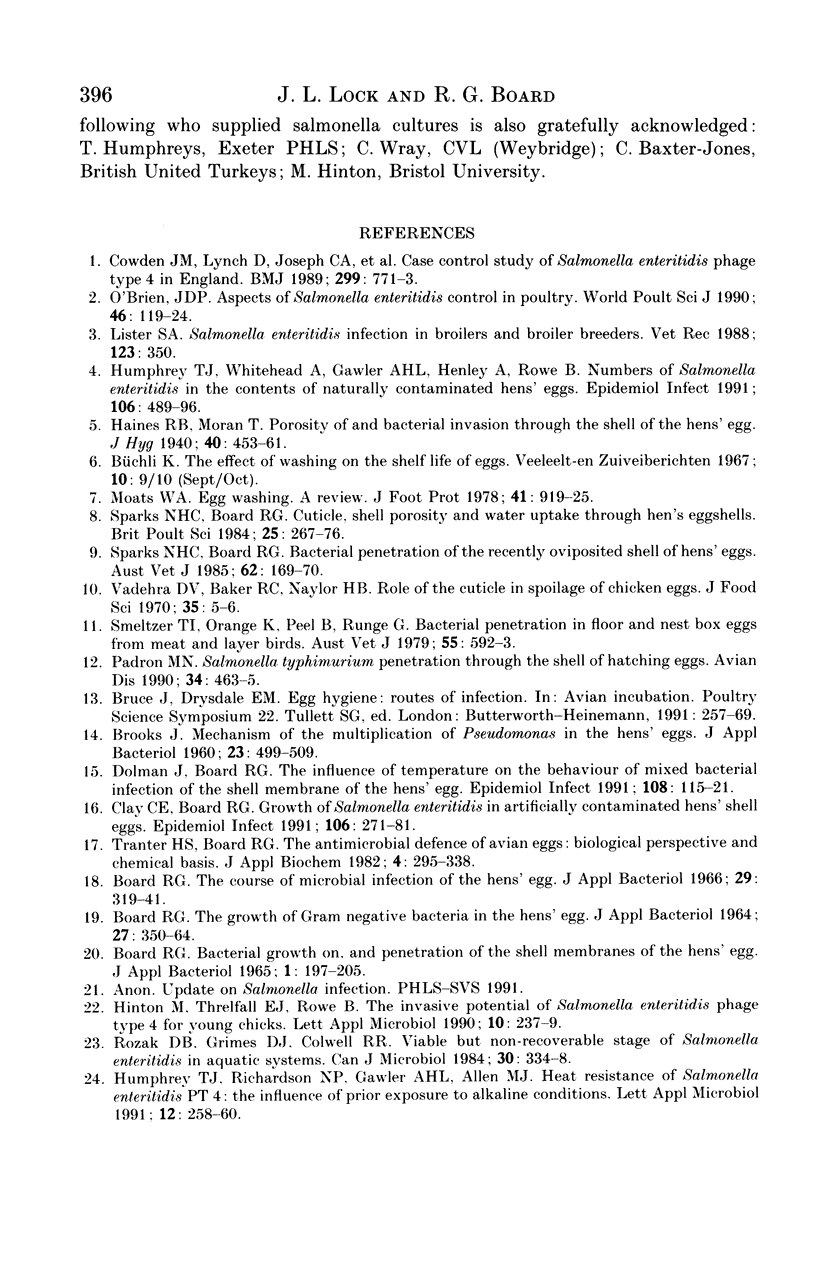
Selected References
These references are in PubMed. This may not be the complete list of references from this article.
- Board R. G. Review article: the course of microbial infection of the hen's egg. J Appl Bacteriol. 1966 Aug;29(2):319–341. doi: 10.1111/j.1365-2672.1966.tb03482.x. [DOI] [PubMed] [Google Scholar]
- Clay C. E., Board R. G. Growth of Salmonella enteritidis in artificially contaminated hens' shell eggs. Epidemiol Infect. 1991 Apr;106(2):271–281. doi: 10.1017/s095026880004841x. [DOI] [PMC free article] [PubMed] [Google Scholar]
- Cowden J. M., Lynch D., Joseph C. A., O'Mahony M., Mawer S. L., Rowe B., Bartlett C. L. Case-control study of infections with Salmonella enteritidis phage type 4 in England. BMJ. 1989 Sep 23;299(6702):771–773. doi: 10.1136/bmj.299.6702.771. [DOI] [PMC free article] [PubMed] [Google Scholar]
- Dolman J., Board R. G. The influence of temperature on the behaviour of mixed bacterial contamination of the shell membrane of the hen's egg. Epidemiol Infect. 1992 Feb;108(1):115–121. doi: 10.1017/s0950268800049566. [DOI] [PMC free article] [PubMed] [Google Scholar]
- Humphrey T. J., Whitehead A., Gawler A. H., Henley A., Rowe B. Numbers of Salmonella enteritidis in the contents of naturally contaminated hens' eggs. Epidemiol Infect. 1991 Jun;106(3):489–496. doi: 10.1017/s0950268800067546. [DOI] [PMC free article] [PubMed] [Google Scholar]
- Lister S. A. Salmonella enteritidis infection in broilers and broiler breeders. Vet Rec. 1988 Sep 24;123(13):350–350. doi: 10.1136/vr.123.13.350. [DOI] [PubMed] [Google Scholar]
- Padron M. Salmonella typhimurium penetration through the eggshell of hatching eggs. Avian Dis. 1990 Apr-Jun;34(2):463–465. [PubMed] [Google Scholar]
- Roszak D. B., Grimes D. J., Colwell R. R. Viable but nonrecoverable stage of Salmonella enteritidis in aquatic systems. Can J Microbiol. 1984 Mar;30(3):334–338. doi: 10.1139/m84-049. [DOI] [PubMed] [Google Scholar]
- Smeltzer T. I., Orange K., Peel B., Runge G. Bacterial penetration in floor and nest box eggs from meat and layer birds. Aust Vet J. 1979 Dec;55(12):592–593. doi: 10.1111/j.1751-0813.1979.tb07055.x. [DOI] [PubMed] [Google Scholar]
- Sparks N. H., Board R. G. Bacterial penetration of the recently oviposited shell of hens' eggs. Aust Vet J. 1985 May;62(5):169–170. doi: 10.1111/j.1751-0813.1985.tb07281.x. [DOI] [PubMed] [Google Scholar]


